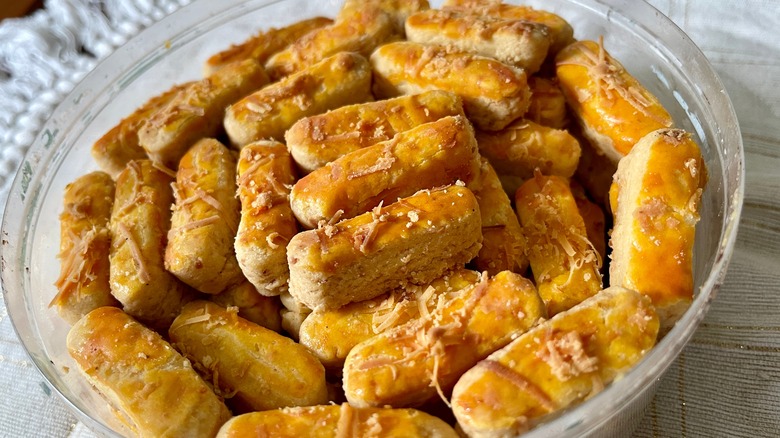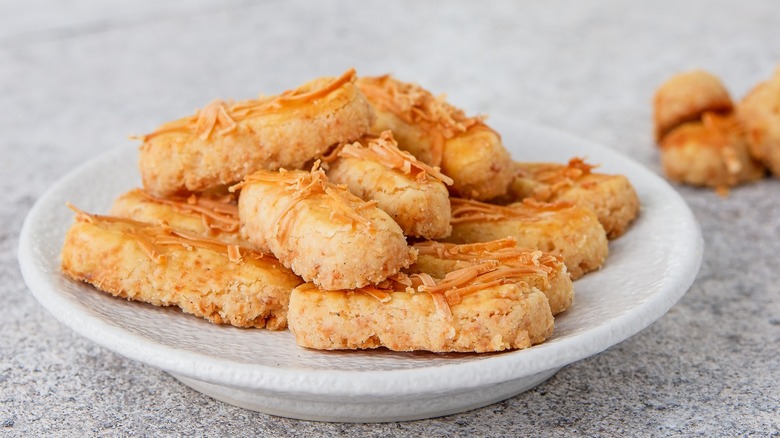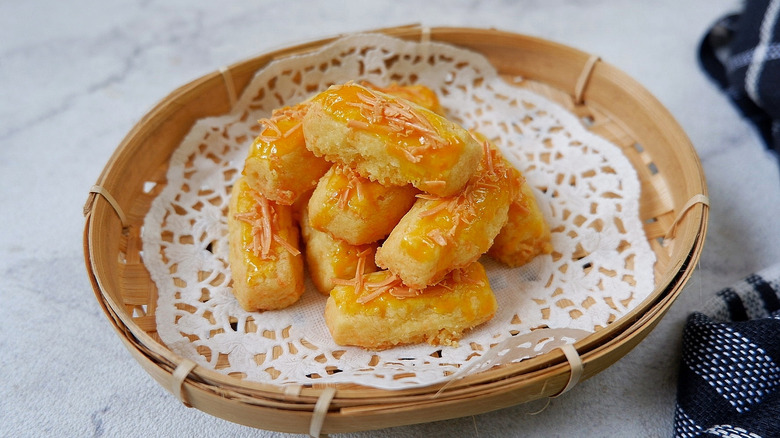Kue Keju: The Indonesian Cheese Cookies With Dutch Origins
Though global cuisine is now at an easier reach than it ever has been before — people in most countries have access to dishes their grandparents couldn't have even dreamed of — there are still some cuisines that haven't yet made significant inroads in a lot of places. Two cuisines you might not be familiar with that have a lot of overlap with each other for historical reasons are Dutch and Indonesian food. And at least one dish common to both cultures is something unlike anything you can find anywhere else.
Whether you call them kue keju or kaastengels, the recipe is the same in both countries: They're essentially cheese cookies. And when you hear "cheese cookies," you should be thinking about savory cheese. These aren't sweet dessert cookies made with cream cheese; this is a recipe that involves specifically Dutch cheeses like gouda or edam. Owing to how they're baked, kue keju wind up with a crispy, crumbly texture and a salty finish unlike any other cookie you can find.
Kue keju exist thanks to a legacy of colonization
If you're wondering how a Dutch cookie (there's little evidence about the specifics of their creation, but we know they hail from the Netherlands originally) came to be popular in Indonesia, it's because the latter country was occupied by the former for over 300 years. Colonization inevitably leads to culinary overlap, and such is the case with these cheesy confections, even if they have different names in each nation. "Kaastengels" literally means "cheese sticks," which is accurate if different from what Americans would think of when they hear that term. "Kue keju" translates along similar lines: It literally means "cheese cake" — again, not inaccurate, but definitely not the Western idea of cheesecake. Regardless, these cookies are the same wherever you go.
As far as how they're made, butter is whipped until pale, then a combination of beaten egg and egg yolks is slowly added, whisking all the while. Then cheese and a thickening agent (all-purpose flour, tapioca flour, or both) are added, with rum as an optional addition. They're ultimately topped with a little more cheese and baked to perfection. The resulting treat is a lot like a shortbread cookie but with a salty, cheesy flavor all to its own.
Kue keju have strong holiday associations
Interestingly, kue keju and kaasstengels both have similar purposes in each culture. Both are particularly associated with holidays — but this means different holidays in each country. In the predominantly Christian Netherlands, they're often considered a Christmas snack. In majority-Muslim Indonesia, though, they're frequently associated with Ramadan, Eid al-Fitr, or even Chinese New Year (not a religious holiday, but celebrated far more widely in Indonesia than in Europe). You don't need to rely on a holiday to enjoy them, though; unlike something like candy canes, they're also served year-round.
Whichever name they go by, kue keju sound like the sort of thing people in plenty of countries would enjoy if they had access to them. Thankfully, you can still make them at home without any fancy equipment. Until the day they become globally popular, we'll have to either make them ourselves or seek out Indonesian bakeries.


